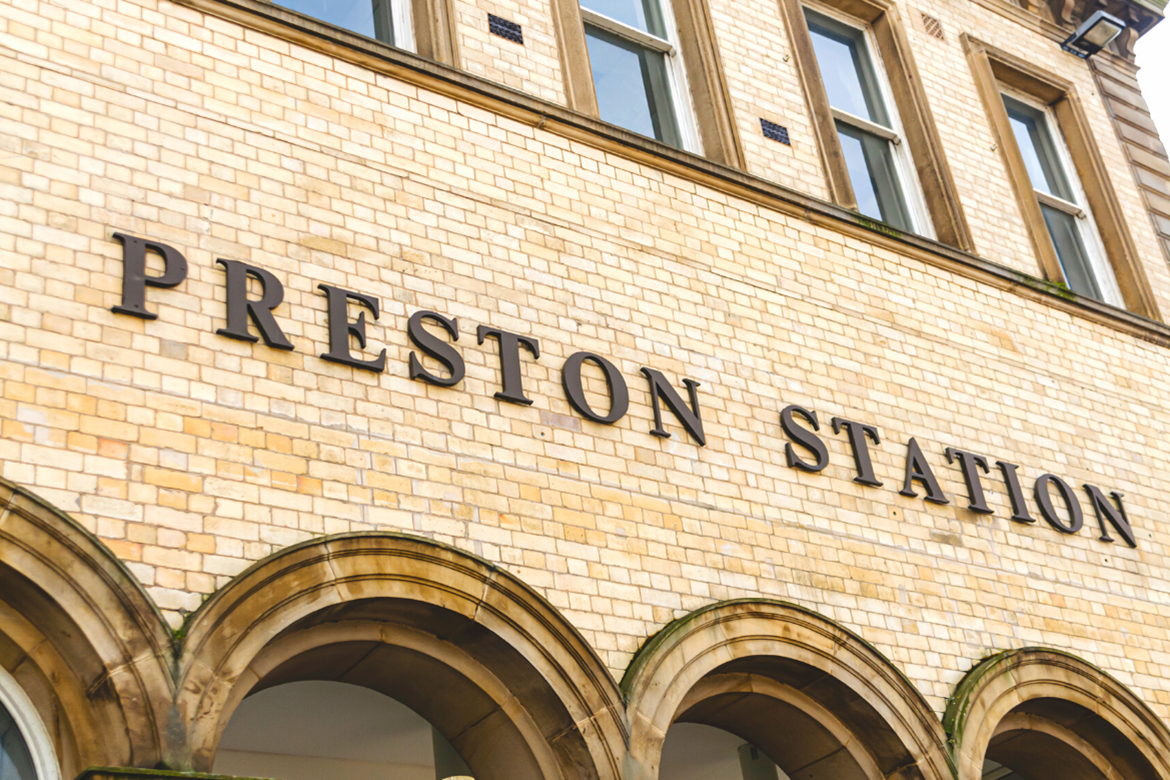Preston Railway Station is Lancashire’s main rail hub, with multiple lines providing direct connections throughout the county, with routes from Blackpool to Colne and Carnforth to Chorley, as well as to major cities such as London, Manchester, Edinburgh, Glasgow, and the Midlands.
It will also serve as a major hub for HS2 services, which will boost connectivity across the United Kingdom.
Lancashire County Council, Preston City Council and UCLan have been working alongside BDP to draw up a regeneration framework aimed at transforming the underperforming area of the City Centre.
The framework sets out a blueprint for how the Preston Station Quarter could be developed in future to bring jobs, improved connectivity, and upgraded public realm. Overall, the aim of the vision is to take advantage of the area’s position as a key gateway to the city.
Plans for grade A office space, an enhanced retail and leisure offer, and new housing, all feature within the plans.
Sites that could be in line for redevelopment include: the Royal Mail Depot off Christian Road, the neighbouring Network Rail depot, Fishergate Centre, several surface carparks, and the former St Joseph’s Orphanage, among others.
The framework is split into four quadrants. University Walk and County Hill are located north of the station and Fishergate, while Station East and Station West are located south of Fishergate.
Proposals and opportunities for each quadrant highlighted in the framework include:
- Station East – could be “the catalyst for the area’s regeneration through the redevelopment of the dated Fishergate Centre”, according to the framework. In addition, there is “significant scope to introduce new city centre uses and create a transformational area of the city”
- University Walk – “should be a much stronger part of the city”, the framework said. The aim for this part of the site aims to link the key assets of the station and UCLan together, enhancing connections and public realm
- County Hill – is currently “isolated in a sea of surface car parking”, according to the framework. Here, there is scope to introduce new uses and urban realm}
- Station West – this area could be used to expand and enhance the station for the arrival of HS2. Over the longer term, there may also be opportunities to redevelop yard areas and the Royal Mail site for new uses, the framework states.
According to the framework, the station itself requires major investment in order to contribute to and capitalise on the Station Quarter’s overall regeneration potential.
Councillor David Borrow, Cabinet Member for Planning and Regulation at Preston City Council said: “This draft framework outlines huge potential for this major gateway to Preston, with an aim to create civic spaces, jobs and City Centre living. Key working partnerships with Lancashire County Council, UCLan and stakeholders, creates broader opportunities for Preston and allows greater regeneration in the City Centre.”
“I encourage as many people as possible to give their feedback, to help shape the future of the Station Gateway to make our city more accessible and inviting to residents, visitors and commuters.”
County Councillor Aidy Riggott, Cabinet Member for Economic Development and Growth at Lancashire County Council, said: “This is a major gateway into the city, and one which has significant potential to generate new jobs, prosperity and provide space for quality new homes.”
“As well as driving economic growth in Preston, due to its excellent connectivity for rail and bus services, these new opportunities will also be accessible to people and businesses elsewhere in the county.”
The draft framework was created with input from the major landowners at stakeholder workshops to understand their own intentions and plans, as well as suggesting ideas for improving this part of the city.
UCLan Deputy Chief Executive Officer Ruth Connor said: “This proposed framework sets out an ambitious vision for the future of Preston.
The development of the area between the University and the train station will provide many opportunities to further blend education, enterprise and commercial activities.”



